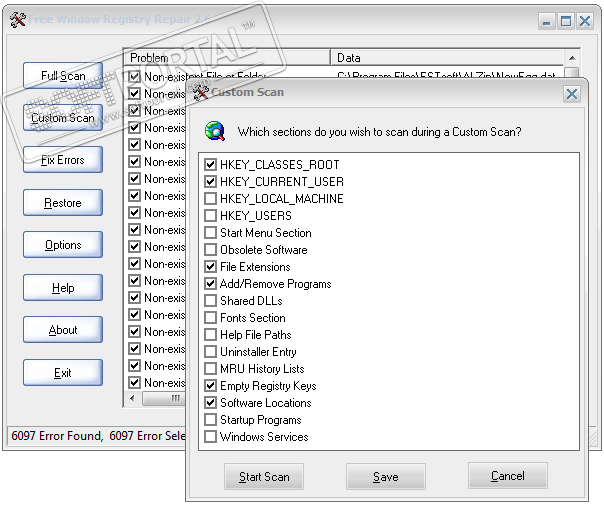
:max_bytes(150000):strip_icc()/tweaknow-regcleaner-7-3-1-windows-8-56a6f9375f9b58b7d0e5c723.png)
Backup and restoration is also simplified as the registry can be accessed over a network connection for remote management/support, including from scripts, using the standard set of APIs, as long as the Remote Registry service is running and firewall rules permit this.īecause the registry is a database, it offers improved system integrity with features such as atomic updates. Because user-based registry settings are loaded from a user-specific path rather than from a read-only system location, the registry allows multiple users to share the same machine, and also allows programs to work for less privileged users.

This is a benefit when editing keys manually using regedit.exe, the built-in Windows Registry Editor. Furthermore, strongly typed data can be stored in the registry, as opposed to the text information stored in. Since file parsing is done much more efficiently with a binary format, it may be read from or written to more quickly than a text INI file. According to Microsoft, this offers several advantages over. By contrast, the Windows Registry stores all application settings in one logical repository (but a number of discrete files) and in a standardized form.

INI files stored each program's settings as a text file or binary file, often located in a shared location that did not provide user-specific settings in a multi-user scenario. NET Framework applications use XML files for configuration, while portable applications usually keep their configuration files with their executables. It is not a requirement for Windows applications to use the Windows Registry. Windows 95 and Windows NT extended its use to rationalize and centralize the information in the profusion of INI files, which held the configurations for individual programs, and were stored at various locations. When introduced with Windows 3.1, the Windows Registry primarily stored configuration information for COM-based components. For example, when a program is installed, a new subkey containing settings such as a program's location, its version, and how to start the program, are all added to the Windows Registry. In other words, the registry or Windows Registry contains information, settings, options, and other values for programs and hardware installed on all versions of Microsoft Windows operating systems. The registry also allows access to counters for profiling system performance. The kernel, device drivers, services, Security Accounts Manager, and user interfaces can all use the registry. The Windows Registry is a hierarchical database that stores low-level settings for the Microsoft Windows operating system and for applications that opt to use the registry. com /en-us /windows /desktop /SysInfo /registry IA-32, x86-64 and ARM (and historically DEC Alpha, Itanium, MIPS, and PowerPC)ĭocs. Registry Editor, the user interface for the registry, in Windows 10Īpril 6, 1992 30 years ago ( ) with Windows 3.1


 0 kommentar(er)
0 kommentar(er)
